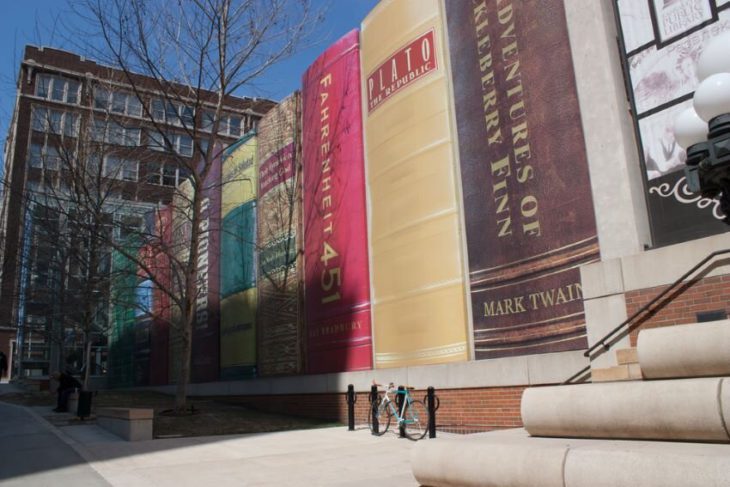
Most travelers bargain on seeing famous monuments and natural wonders when they travel. Few will venture off the beaten track to experience some of the stranger and more interesting sites along the away. For those adventurous few, there are many unusual hidden gems around the world to find. Only those with a true sense of wanderlust will go beyond the tour guides and tourist paths to find the truly spectacular wonders. From giant rocking chairs to peeing statues, the world is filled with surprises if you know where to look. If you’re looking for new and interesting places to visit on your next trip, look no further. Here is a list of some of the world’s strangest landmarks hiding in plain sight in cities and towns from Texas to Thailand.
10. Cadillac Ranch (Amarillo, Texas)
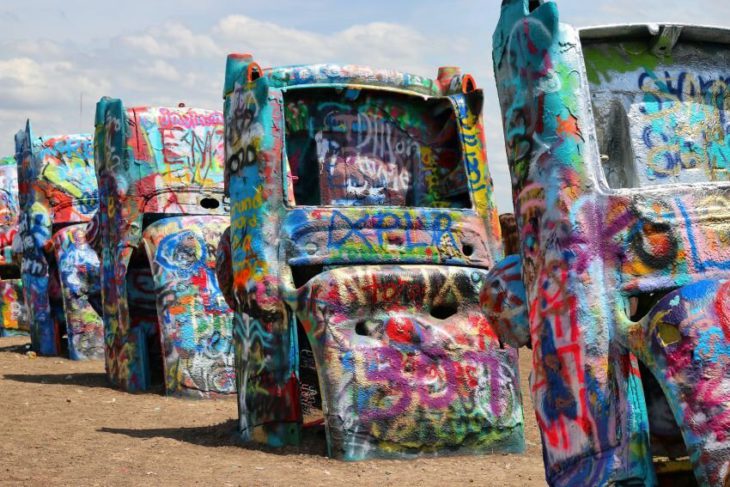
This colorful installation was built in the mid-1970s by a San Francisco artists collective called The Ant Farm. It was commissioned by billionaire Stanley Marsh 3. He wanted to create an artwork that would baffle the locals of Amarillo. Each car is erected leaning to the same degree as the Pyramids of Giza. Although the structures are worse for wear today, The Ant Farm intended to showcase the evolution of Cadillac’s iconic tail fin. Spanning nearly two decades of Cadillac models, most of the installation has been defaced, so you may not get to see many tail fins intact. When it was created, visitors keenly vandalized the art to the initial apprehension of the artists. But they soon realized there was no harm in defacing the art and later encouraged it. Cadillac Ranch has stood the test of time and continues to attract tourists and locals today.
9. Church of St. George (Lalibela, Ethiopia)
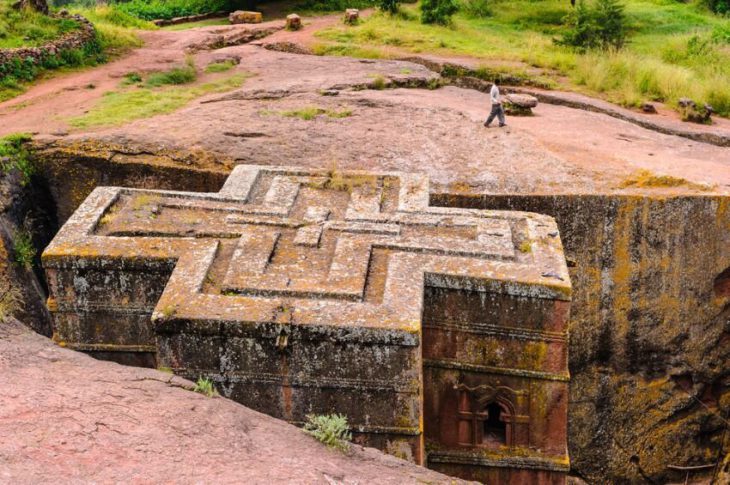
There is much mythology around the origin of the Church of St. George. The church was built by King Gebre Masqel Lalibela of the Zagwe Dynasty. It is carved out of the volcanic rock surrounding it and it is said the plans came from the angels who visited the King. The angels told King Gebre that the church would bring heaven down to earth. The plans based on the crucifix stands today as a symbol of Ethiopia’s spiritual heart. As soon as it was built, it is said that the King and priesthood gathered as the angels came down to bless the site. This volcanic structure still holds great significance to the people of Ethiopia. The Church of St. George contains sacred treasures inside its walls that are only accessible to the priesthood, among them a wooden box carved by the King himself. The tombs of monks and priests who dedicated themselves to the church are also found inside.
8. Copenhill (Copenhagen, Denmark)
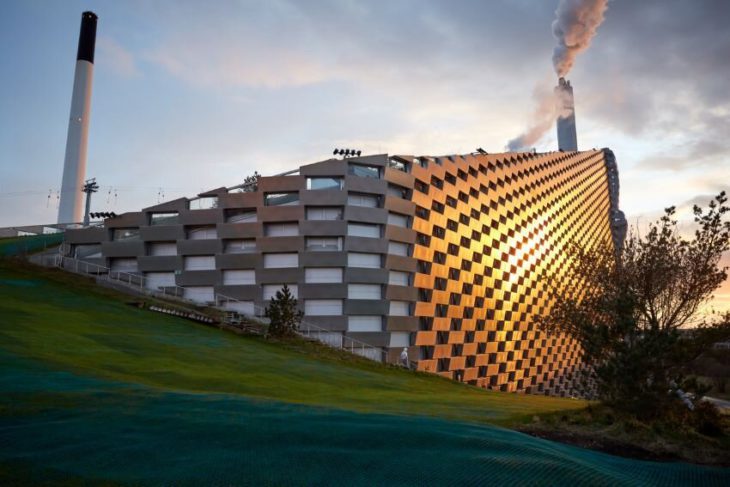
The first thing about Copenhill that catches your eye is not the metallic blocks that make up the structure but the smoke pluming from the chimneys around it. Well, that’s because firstly, it’s located in an industrial area near the city center, but more importantly, Cophenhill serves as a waste-to-energy plant. This intriguing industrial triumph is situated in one of Copenhagen’s densest areas and it is one of the smartest innovations in waste management and energy production, wrapped in stunning architectural design. When it was built in 2011, the structure served as the largest environmental initiative in Denmark. Not only that, Copenhill marries architectural beauty and functionality. Factories, which are often unsightly, carry a bad rep and the goal for this landmark was to provide a better looking, environmentally conscious alternative. It certainly does the trick because who would’ve thought a waste management plant could look this sleek and modern.
7. High-Heel Wedding Church (Budai Township, Taiwan)
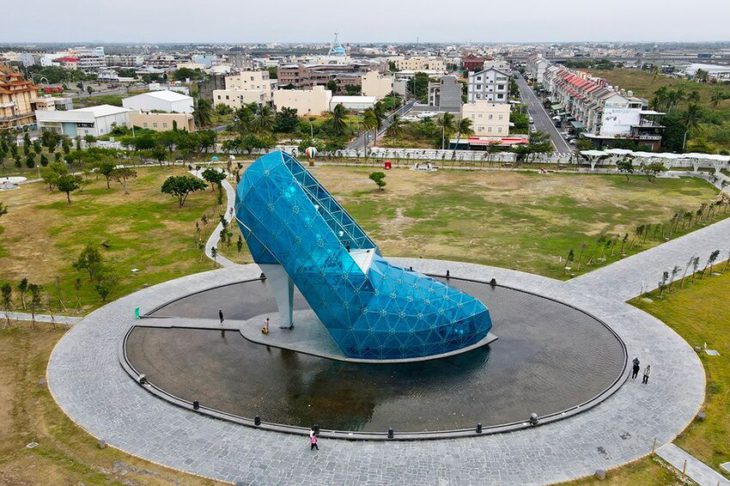
This is probably one of the strangest structures on this list, but it commemorates a painful memory in Taiwanese history and aims to celebrate the pursuit of happiness. Making it the sweetest landmark we’re yet to encounter. The church is shaped like a giant glass slipper after Cinderella’s own heart. The High-Heel Wedding Church was constructed in 2016 with 320 blue-tinted panes set into metal grids. It stands 55 ft above the ground. This grandiose structure functions more as a wedding venue than a church. The venue’s interior features over 100 love-inspired decorations setting a joyful background for photoshoots as well. The local tragedy that sets the historical context for the church’s construction follows the story of a young Taiwanese woman who’d fallen to Blackfoot. This resulted in the amputation of the lower part of her legs, ending her engagement and leaving her to live the rest of her days alone in a church.
6. Kubuswoningen (Rotterdam, Netherlands)
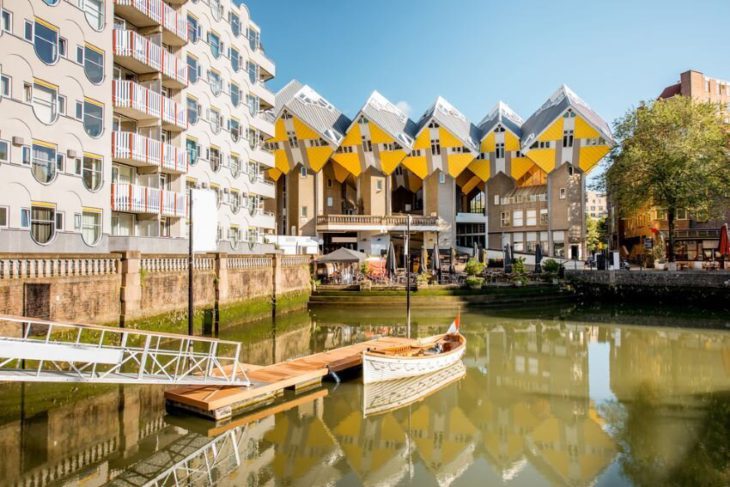
The Cube Houses are located in Rotterdam and it remains the city’s most iconic attraction. These residential developments were designed by Dutch architect Piet Blom who had previously experimented with cubic architecture before being commissioned by the city’s planners. The cubes are tilted over by 45 degrees, making the most of the available space. They resemble an abstract forest, with each roof representing a treetop. Unlike anything that can be found in the world, these cube structures are a testament to the creativity and innovation in Dutch design. One very clever resident turned his apartment into the Show Cube Museum after being pestered for years by passersby who wanted to see the inside. Visitors get a chance to tour the inside a fully furnished version of the cube. The coolest feature of Kubuswoningen is that the houses form a pedestrian bridge across one of the busiest entry roads into the city.
5. Niteroi Museum of Contemporary Art (Rio de Janeiro, Brazil)
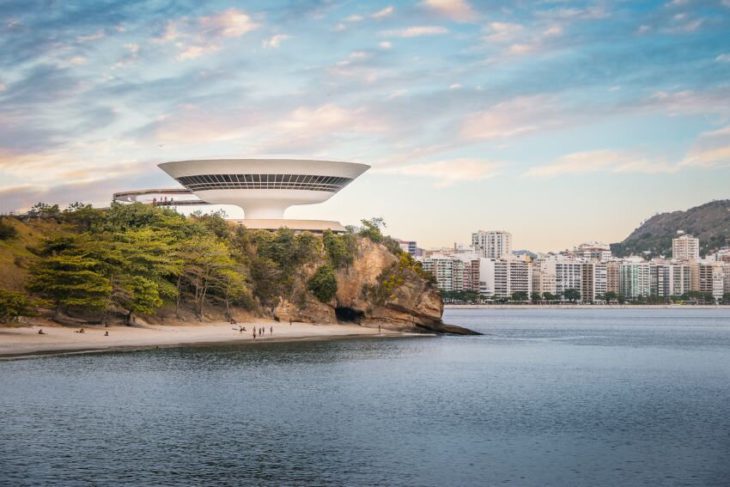
At first glance, the Niteroi Museum of Contemporary Art resembles a flying saucer. However, the architect who designed it intended for it to resemble a flower. Its upside cone stands in the middle of a circular pool and provides a panoramic view of the surrounding Rio de Janeiro. The museum was completed in 1996 and it stands at 52 ft on a cliffside in the Guanabara Bay in the city of Niteroi. The famous Brazilian architect Oscar Niemeyer who designed the museum, was nearly 90 years old when it was completed and claimed it was one of his favorite projects. It takes a short ferry ride across from Rio de Janeiro to Guanabara Bay to get to the museum. Inside you will find 1217 collected works from art collector Joao Sattamini. A collection he had assembled since the 1950s, which comprises the second largest collection of contemporary art in Brazil.
4. Tianzi Hotel (Hebei, China)
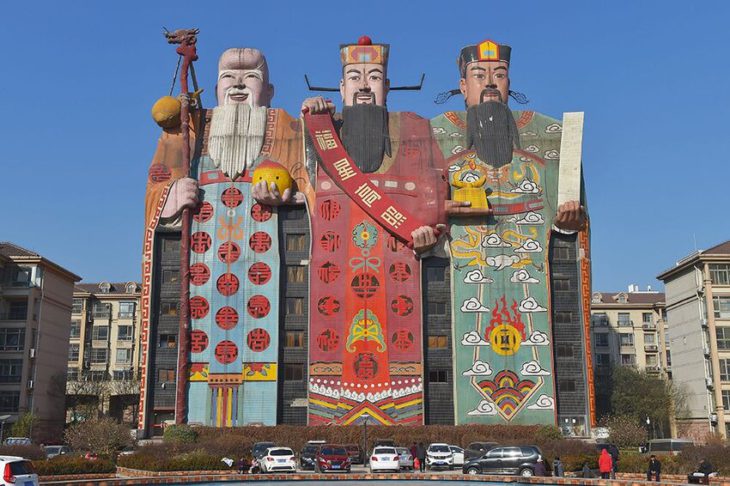
Although very little is known about the interior of this hotel, its exterior speaks volumes. That’s because the Tianzi Hotel’s exterior is shaped by three large men in colorful clothing. It was named the “Biggest Image Building” by the Guinness World Records. The word “Tianzi” is loosely translated to mean “Son of Heaven.” It is no surprise then that these three men depict Chinese Gods from the Ming Dynasty. Each one represents both astrological signs and attributes for good fortune in life. Moving from left to right, the first God is Shou. He is always depicted carrying a peach. He is dressed in green and has a long white beard and hair. Shou is associated with longevity and his star is the South Pole. In the middle stands Fu, who is dressed in a red robe. Fu is associated with Jupiter and fortune. On the right is Lu, dressed in green, who represents prosperity and rank. It’s interesting to note that Lu refers specifically to a government officer’s salary.
3. Tiger and Turtle Magic Mountain (Duisberg, Germany)
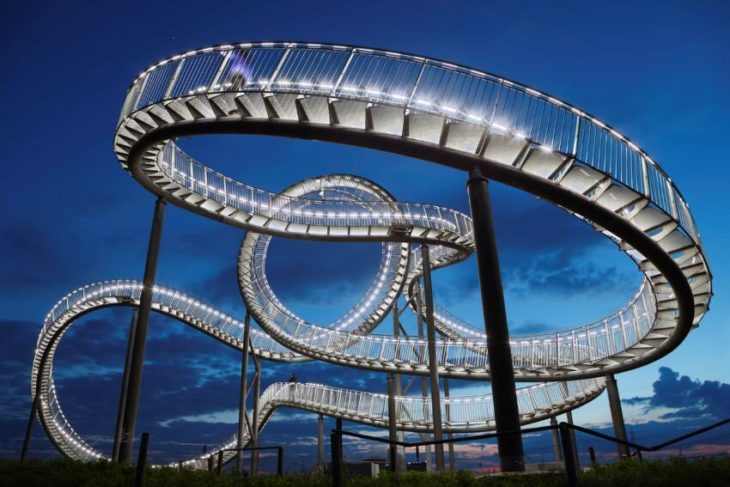
This art installation is a 69 ft pedestrian roller coaster that was built upon a Duisburg hillside in 2011. The sculpture was created by artists Heike Mutter and Ulrich Genth from leftover steel and zinc from local mine operations. Visitors can walk the structure, except for the loop because, gravity. At night the structure is lit up by 880 LEDs that trace its twists and curves. so even those who visit it by night can enjoy the splendor. Magnificent views of the countryside that surround it attract local and international travelers every year, which is exactly why it was built. The structure’s name “Tiger and Turtle” illustrates the pace which you come to expect from a real rollercoaster, juxtaposed against the actual speed with which it is walked. It gives the impression of being fast but pedestrians are encouraged to take a stroll along the structure while taking in the incredible views.
2. Turning Torso (Malmӧ, Sweden)
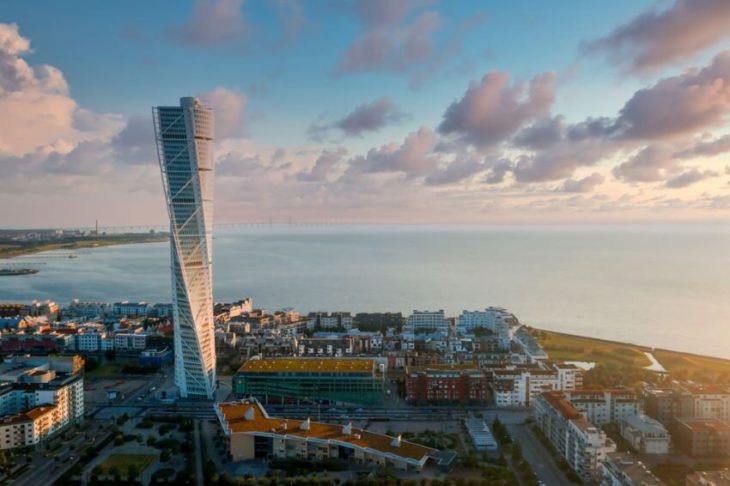
This incredible skyscraper is the epitome of structural art, design and sustainability and it towers over Malmӧ at 623.3 ft. Turning Torso was inspired by the marble sculpture “Twisting Torso” created by Santiago Calatrava, the architect, sculptor and engineer who also designed Turning Torso. The skyscraper is divided into nine segments of five-story height, which are rotated at 90 degrees as you go up in height along with the 57 storey complex. The first four segments of “Turning Torso” are dedicated to offices, while the other six offer residential space. It’s not only modern and functional, Turning Torso is ahead of the pack when it comes to environmental sustainability. The energy consumed by its residents is completely renewable, as the building gets its energy from wind, solar, hydro and geothermal sources. Energy usage meters allow residents to measure their consumption. Organic disposal units in each apartment collect waste which is then converted into energy.
1. Wat Samphran Temple (Nakhon Pathom, Thailand)
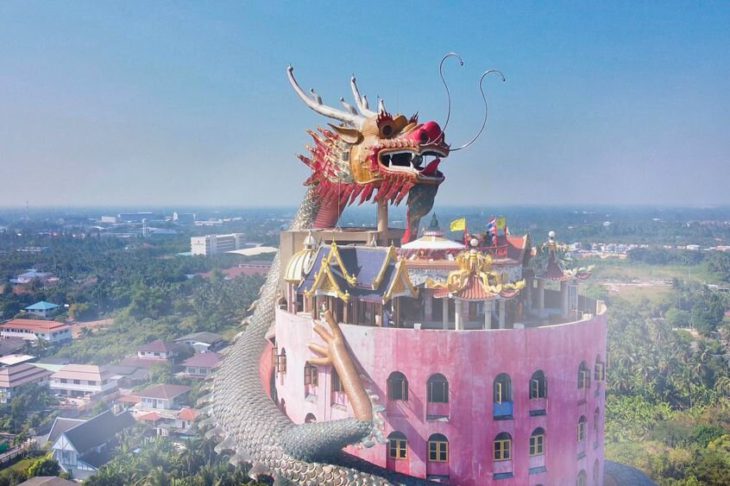
Wat Samphran is a Buddhist temple about 25 miles west of Bangkok. The most striking feature of the temple is the life-size dragon that wraps around it from the bottom right up to the top of its 17th story. Temple visitors must climb the many steps to get to the top. Once there, they can touch its beard or long talons, with a view of the surrounding area below. There are many symbolic meanings linked to the construction of the temple, including its 80 meters (262.4 ft) height, which represents the age Buddha was at the time of his death. While not much is known about the temple’s history, it was registered in 1985 and took only five years to build. The number of floors leading up to the top is a symbol of the levels of Brahma Loka, the highest heavenly realm where the gods and celestial spirits reside. Apart from its spiritual significance, Wat Samphran promises to be an extraordinary sight to behold.
